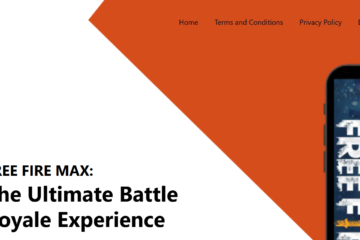Text animation is more than just making words move—it’s an essential storytelling tool in the world of motion design. Whether it’s in a brand video, explainer, or social media post, animated text helps communicate ideas more dynamically. As digital content becomes more saturated, creative text animation is one of the most effective ways to grab attention and convey messages with impact. Animation studios around the world are constantly pushing the boundaries of how text can be brought to life with style, clarity, and emotion.
1. Start with the Message, Not the Motion
Before animating anything, it’s crucial to understand the message behind the words. Animation should never be random—it must support and amplify what’s being said. Whether the message is serious, humorous, inspirational, or dramatic, that emotional tone will guide the style, pacing, and motion of the text. Animation studios begin every project by clarifying the intent and target audience so that the animation feels purposeful and connected to the story being told.
2. Select Typography That Matches the Tone
The choice of font plays a significant role in how the animation is perceived. Fonts have personalities—some feel bold and strong, others feel soft and elegant. For instance, a startup tech brand might use modern, geometric typography to communicate innovation, while a fashion label could lean into sleek, serif fonts for sophistication. Many animation studios go the extra mile by customizing or designing typefaces that are unique to a brand or project. This not only improves consistency but also enhances the creative potential during animation.
3. Timing and Easing Create Emotional Flow
One of the most powerful aspects of motion design is its ability to control how viewers feel using timing. Fast, sharp transitions can build energy, while slow, smooth animations can evoke calmness. Easing refers to how motion accelerates or decelerates, and this can dramatically affect how natural the movement feels. Skilled animators in professional animation studios often use graph editors to fine-tune every movement, ensuring that the text doesn’t just move—but moves with purpose and grace.
4. Use Kinetic Typography for Impact
Kinetic typography is a popular method of syncing animated text with audio, such as voiceovers or music. This technique can help emphasize important words and phrases, making them more memorable and emotionally resonant. For example, having each word appear on beat or in sync with narration creates a sense of rhythm and clarity. This approach is often used in lyric videos, product explainers, and motivational content, and it’s a staple in the toolkits of animation studios aiming to merge audio and visual storytelling seamlessly.
5. Add Visual Flair Through Techniques and Effects
Creative text animation thrives on the use of unique techniques and visual effects. From masking and tracking to 3D movement and particle transitions, the possibilities are nearly endless. These effects can make words appear to glow, shatter, burn, or fly—turning simple sentences into visual spectacles. Animation studios often experiment with layering different methods to create more immersive text animations, always ensuring that the style supports the overall narrative and doesn’t overwhelm the message.
6. Animate with Emotion in Mind
Great motion design connects with the audience emotionally. That means the animation must feel appropriate for the tone of the message. If the content is playful, the text might bounce or wiggle; if it’s serious, the movement might be subtle and smooth. Emotion-driven animation doesn’t just look good—it feels right. Animation studios understand that the way text moves can influence how it is perceived and whether the message resonates with the viewer on a deeper level.
7. Think in Sequences, Not Isolated Animations
To maintain viewer engagement, it’s important to view the entire animation as a sequence, not just a series of isolated text effects. Each line or phrase should lead naturally into the next, creating a visual rhythm and flow. Transitions between sections must feel smooth, not abrupt. Animation studios often use storyboards or animatics to plan out the pacing and flow of text animation, ensuring that every moment contributes to the larger story being told.
8. Avoid Overdoing Effects
While it’s tempting to use every animation trick in the book, overloading a video with effects can quickly become distracting. Too much movement can dilute the message and overwhelm the audience. Simplicity often makes a stronger impact than complexity. The best text animations are those that balance creativity with clarity. Animation studios are especially mindful of this balance, using just enough visual flair to enhance the message without taking away from it.
9. Use the Right Tools for the Job
The quality of text animation also depends on the tools being used. Adobe After Effects is the industry standard, offering unmatched control over timing, effects, and typography. For 3D animation, Cinema 4D is often used, while plugins like Red Giant Universe provide additional creative options. In app and web design, lightweight tools like Lottie make it easy to integrate animated text seamlessly. Animation studios typically combine several tools in their workflow, selecting the best software based on the project’s needs and desired outcome.
Final Thoughts
Animating text creatively is both an art and a craft. It takes a deep understanding of visual storytelling, design principles, and technical skill. Animation studios continue to lead the way in this field, constantly finding new ways to make words move, speak, and resonate. As digital content becomes more competitive, creative text animation will only grow in importance—because when words are animated well, they do more than inform. They connect.





